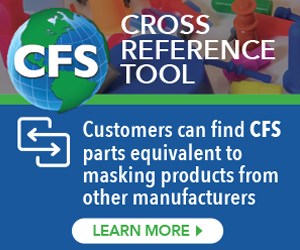EPA Process for Designation New Hazardous Air Pollutants (HAPs)
EPA’s expanded powers to regulate a wider universe of substances as hazardous air pollutants.
Hazardous air pollutants (HAPs) are those pollutants that are known or suspected to cause cancer or other serious health effects. The original list of HAPs in the Clean Air Act Amendments of 1990 included 189 pollutants. Since 1990, EPA has removed two pollutants from the list, but has not added any new ones. Sources of HAP emissions are subject to national emissions standards for hazardous air pollutants (NESHAP), such as the NESHAP for chromium electroplating and anodizing.
On June 11, 2021 EPA issued an advanced notice of proposed rulemaking (ANPRM) regarding the addition of 1-bromopropane (also known as n-propyl bromide) as a hazardous air pollutant. In the action, EPA asserted that the substantive decision to designate 1-bromopropane was made last year on June 18, 2020 in a Federal Register notice that granted the petition to list it as a HAP. EPA noted that the decision would not have legal effect until the regulatory HAP list is amended through a rulemaking. In the notice, EPA sought comments on a wide range of implementation issues related to the listing of 1-bromopropane as a HAP.
EPA’s process may be problematic for several reasons – because of how the agency did this, additional listings of air pollutants could be on the horizon with little opposition. For example, several stakeholders have been advocating for listing PFOS and PFOA as HAPs.
The consequences of a new HAP listing could be significant. New listings could reopen current air rules for industry source categories and drive modifications to facility permits. The additional potential new HAP emissions could also trigger some area sources to become major sources subject to more stringent requirements.
Several industry trade groups have indicated that they intend to challenge EPA’s perceived “regulatory shortcut” to listing new pollutants. The challenge will be in the context of the HAP listing for a single substances, 1-bromopropane, but it will likely set the precedent for future HAP listing decisions. NASF will continue to work with other industry trade groups on the effort and provide updates to members. If you have any questions or would like additional information on this issue, please contact Jeff Hannapel with NASF at jhannapel@thepolicygroup.com.
This update is courtesy of the National Association for Surface Finishing (NASF). For more information or to become a member, visit nasf.org.
Related Content
-
PFAS in Surface Finishing: Where is it Going?
Regulation of PFAS chemicals continues to increase — here are some steps finishing operations can take to prepare.
-
EPA Proposes Information Collection Request for Surface Finishing PFAS Water Discharge Rule
NASF releases regulatory alert on EPA information collection request for PFAS wastewater discharge rule.
-
Finishing Another Year — Looking Back at the Trends of 2023
Products Finishing reflects on a year of reporting on the surface finishing industry and looks ahead to what may be in store for 2024.















